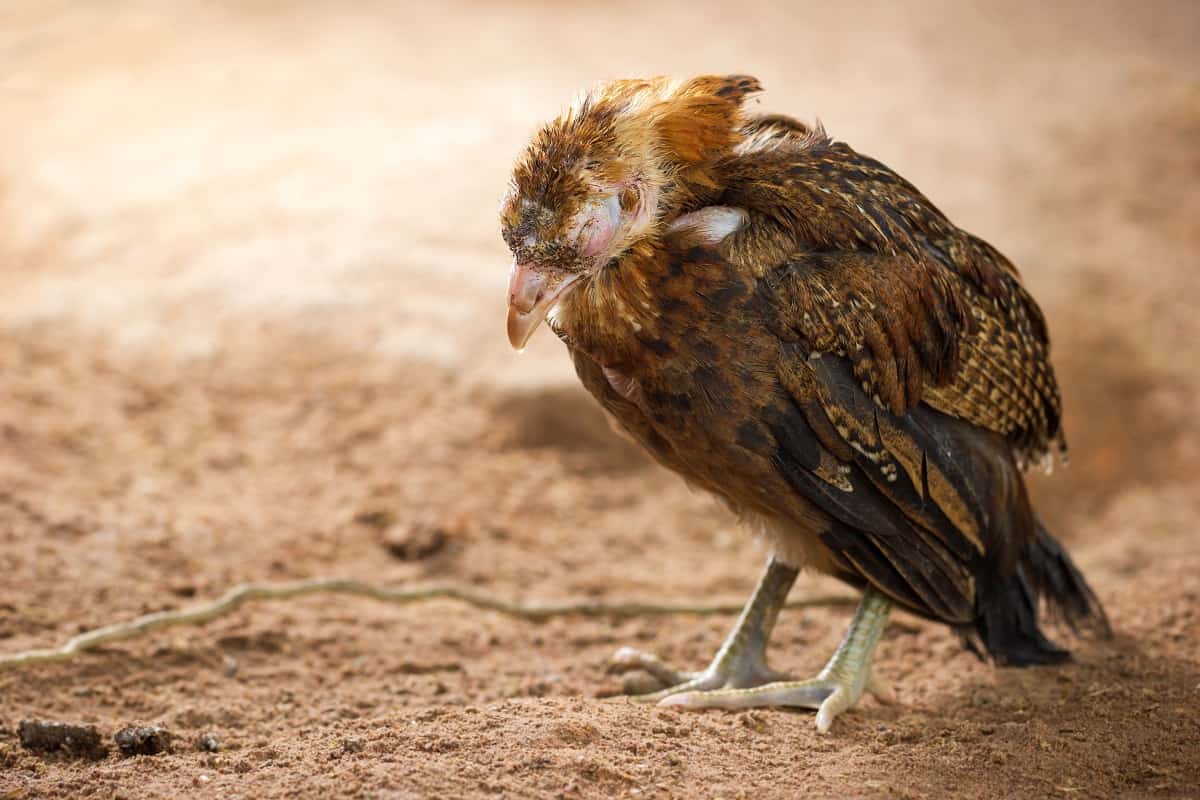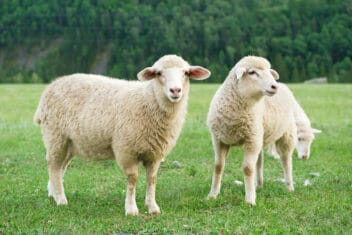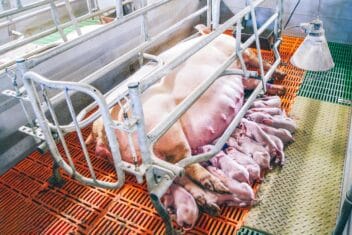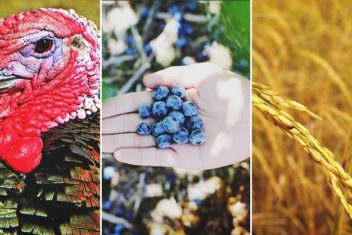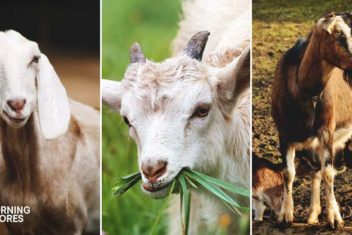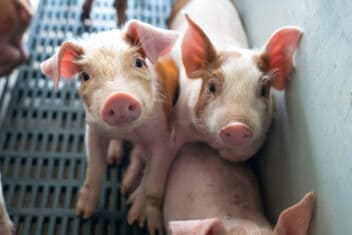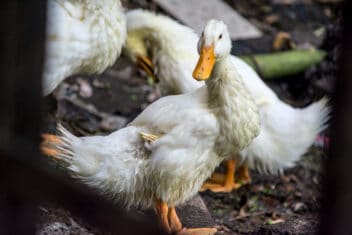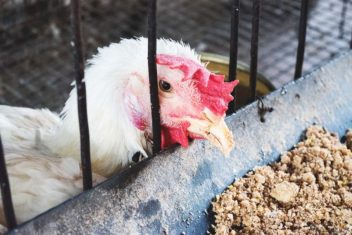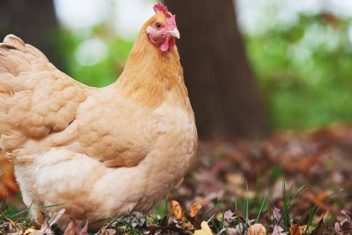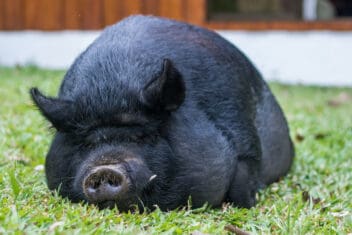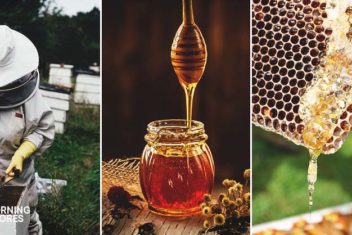Just a few years ago, the avian flu hit two states away from us. Even poultry fairs in my state were canceled, interstate poultry transport was outlawed, and backyard poultry keepers were warned to watch for signs of illness in their flocks.
I can tell you from experience – worrying that every wild bird flying overhead might be carrying a death sentence to your beloved backyard flock is an unsettling feeling.
Thankfully not every flu strain is deadly. Also, the most lethal outbreaks tend to be contained quickly, by authorities, due to our global dependence on poultry as a food source. Yet, if you keep or spend time around poultry, there are some things you should know about avian flu for your safety and the wellbeing of poultry flocks.
What is Avian Flu?
We all know what the “flu” is in humans. It’s not a single thing, but a collection of different virus strains that cause human sicknesses.
Depending on which strain of flu you get, your symptoms can range from mild to severe. The so-called “swine flu” for example, laid many people up for more than a week. While a “normal” flu might just make you feel under the weather for a couple of days.
The same is true of avian or bird flu. They aren’t just one disease, but many different kinds. Some just result in minor illnesses that can be quickly countered by a healthy immune system. Others are lethal.
They are a risk to all birds including wild birds and domesticated poultry. They can also be transmitted from birds to humans.
LPAI or HPAI
Generally, avian flues are classed as either low pathogenic avian influenza (LPAI) or highly pathogenic avian influenza (HPAI). LPAI viruses are the mild kind that usually results in poultry recovering on their own.
The HPAI type viruses, by contrast, tend to spread rapidly and cause deaths to entire flocks. HPAI avian flu strains pose an immediate and serious risk to our global food supply. As a result, these types of avian flu get immediate media attention and trigger regional or statewide restrictions on poultry movement – such as what happened in my state in 2017.
Unfortunately, when HPAI strains are found in a flock, the whole flock is usually culled to reduce the risk of the virus spreading. Additionally, in some circumstances, nearby flocks may also be preemptively culled to ensure the virus is contained.
Human Health Risks
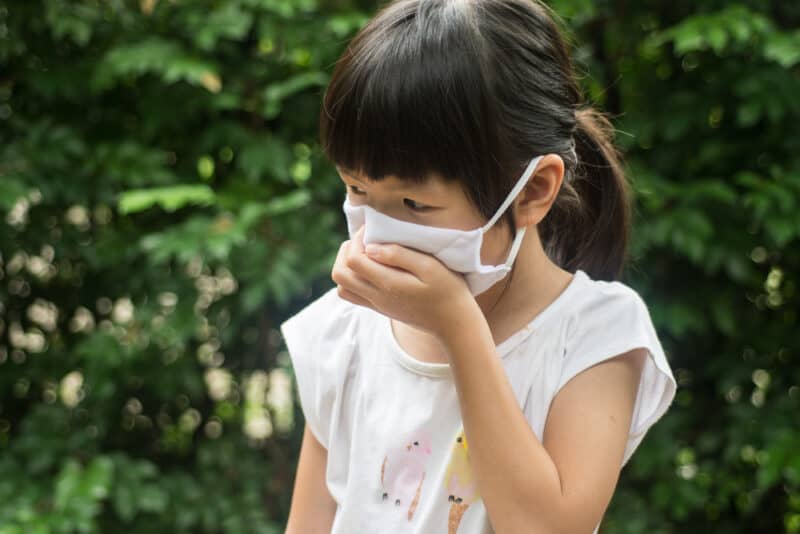
It’s important to note that several strains of HPAI can also pose lethal risks to human health. In particular, the two most concerning strains are H5N1 and H7N9.
1. H5N1
H5N1 is known to produce severe illness and has a 60% mortality rate when transmitted to humans. Thankfully, it doesn’t transmit easily from poultry to humans or from human to human. It’s most likely directly transmitted to humans through prolonged contact with infected birds or by close contact with contaminated carcasses (e.g. when processing).
2. H7N9
H7N9 causes severe pneumonia in humans and requires medical treatment to recover in most cases. There are a few instances where people were able to recover at home without medical care. Overall, though, even with qualified medical care it has a human mortality rate of 40%.
Known H7N9 cases in humans were caused by direct contact between the person who contracted the virus and the live poultry that carried it. There are no known cases of human-to-human transmission.
3. Other Avian Flu Strains
Several other strains of avian flu have been transmitted to humans through direct contact with poultry. These other strains don’t currently have the same high mortality rates as H5N1 and H7N9. However, they can still cause human illness.
Safety Warning
Although poultry to human transmission is considered rare, epidemiologists and researchers are concerned that these viruses could potentially pose significant risks to human populations if outbreaks are not contained quickly.
In particular, people who have contact with live poultry such as by keeping them at home or buying them from live poultry markets seem to be at the greatest risk of contracting avian flu.
In the US, the risk for catching avian flu is still considered very low. However, as a precaution, the Center for Disease Control (CDC), offers some specific recommendations and guidelines to help backyard flock keepers. These details I’ll share, along with some additional information, in the sections that follow.
How Avian Flu Spreads

Avian flu is highly contagious among bird populations. As such, there are many ways your flock could become infected.
1. Wild Birds
For avian flu, wild bird populations can carry and spread viruses to backyard flocks. For example, migratory geese or ducks, just passing by may drop manure from above or stop to forage near your flock and transmit the disease.
Ducks, in particular, often show no signs of having a virus. Yet, they may transmit the virus to other birds for up to 17 days.
2. Domestic Bird Movement
Another way the virus might arrive at your homestead is through purchases of new birds that are infected with avian flu. Unless you quarantine new birds before integrating them into your flock, your new birds might quickly infect the rest of your poultry with the flu.
3. Live Bird Markets
Live bird markets are another source of possible infection. Even if you don’t end up buying live poultry from a market or stockyard sale, when you visit one you could become a biohazard risk because of your contact with contaminated surfaces. For example, you might step in poop and then carry the virus back on your shoes.
4. Flock-wide Spread
Once any bird in your flock contracts the flu, it will spread easily throughout your flock. As in humans, the virus permeates the mucus membranes, intestines, and can then be transmitted through a variety of body fluids and aerosolized particles. Poultry to poultry contact with any of those infected substances could spread the virus.
Spread to Humans
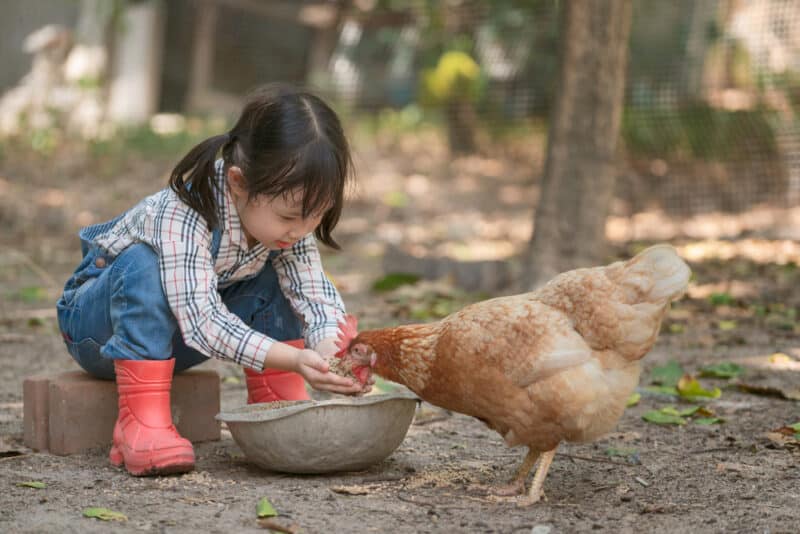
Those are the methods by which the virus can wreak havoc on your flock. However now, let’s talk about how we humans can contract avian flu from our poultry.
There are three likely ways you could catch avian flu from your flock.
- Physical contact, such as holding your chickens when they are infected with the flu, and then touching your nose, eyes, or mouth is one area of risk.
- Coming into contact with contaminated surfaces, such as when cleaning the coop or collecting eggs, could be another risk area.
- Finally, the virus can be spread through inhaled dust and viral droplets shed as poultry do normal activities like flapping their wings, shaking their head, or vigorously scratching the ground.
Avian Flu Prevention
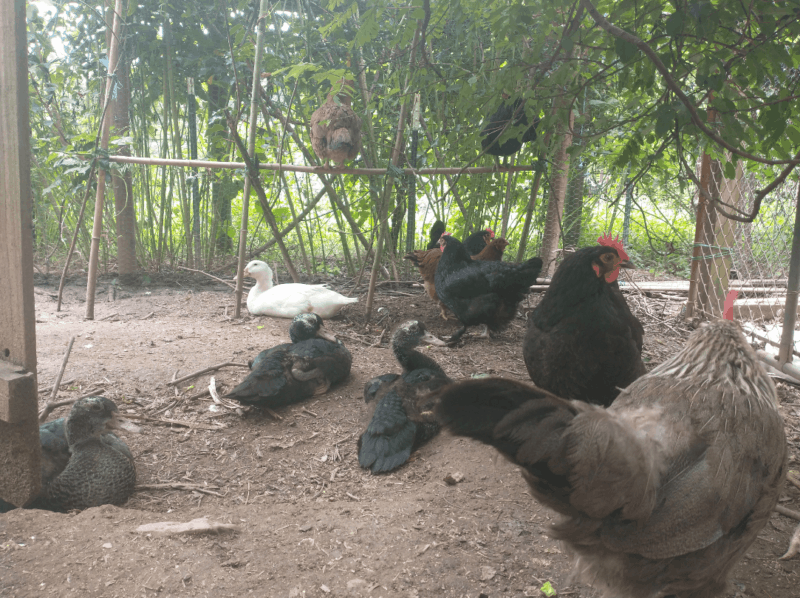
As we’ve discussed, avian flu spreads easily and quickly from bird to bird. Plus, it can transmit from poultry to humans. As such, it can be difficult to contain avian flu once detected. Yet, there are some things you can do to reduce your risk for exposure.
1. Stay Informed
The first thing to do is stay informed about bird flu outbreaks. Sign up for notifications from your state agricultural office. When outbreaks occur, they will use those notification systems to alert recipients to risks. They may also offer advice on how to protect your flock.
2. Double Check Before You Buy
If you are buying new poultry, then you’ll also need to check on the avian flu status for the location you are buying from as a precaution.
Especially for HPAI type viruses, states often prohibit poultry movement and sales until the outbreak is controlled. However, there are a lot of people who sell poultry through classified ads or word of mouth that might not be current on all the legal regulations. As such, it’s a good idea to do your own checking for outbreaks before making any purchases.
3. Buy From National Poultry Improvement Plan (NPIP) Participants
You can also protect your flock by making new purchases only from NPIP participant sellers. The National Poultry Improvement Plan is a voluntary program designed to help reduce the risk of spreading contagious poultry diseases.
Participants must follow certain biohazard prevention procedures. They must also do regular testing of their flocks for diseases. This kind of proactive disease prevention approach can make purchases less risky for backyard flock keepers.
Backyard Biosecurity
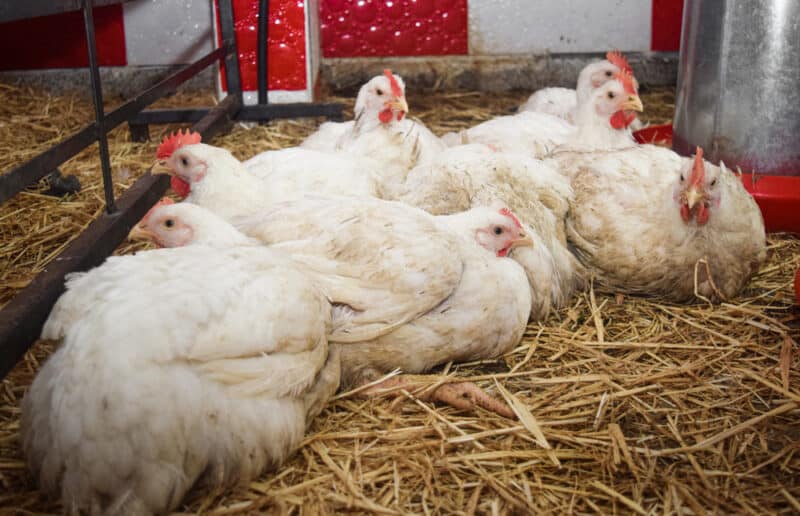
For largescale commercial poultry operations, extensive biosecurity measures are employed to minimize risks for avian flu. For example, keeping birds entirely indoors with no access to wild birds can help.
Wearing virus-free biohazard suits to prevent tracking the virus in on shoes or clothing reduces risks. Disinfectant shoe baths are another option. Using HEPA-filtered ventilation systems to reduce potential virus particles from entering the air stream can also help.
However, let’s be real, that’s not how most of us keep our chickens, ducks, and turkeys at home. We want them to have fresh air, access to pasture and forage, and a more natural life than what a factory-raised chicken will get. So, there is no way we can be as effective at biosecurity as commercial producers.
Still, there are a few things you can do to avoid increasing your risks of bringing diseases to your flock or contracting them yourself.
1. Quarantine
When you do buy new flock members, quarantine those birds away from your flock for at least two weeks as a precaution until you are certain they are healthy.
The further away you can keep quarantined birds from your flock the better. However, to be certain, don’t allow them to eat, drink, sleep, or poop in areas your flock inhabits until you are certain newly purchased birds are healthy.
You’ll also have to exercise caution when caring for quarantined birds. Handle them as little as possible. Wash your hands after handling. Avoid touching your face, etc.
2. Prevent Flock to Flock Transmission
Additionally, if you come into contact with other flocks such as when visiting friends or making purchases, change clothes and use a simple bleach water bath to clean the bottom of your shoes before visiting your own flock again. That way you reduce the risk of bringing diseases home to your flock.
3. Limit Wild Bird Contact
We can’t prevent wild birds from flying over our yards or drinking at our ponds. Even so, you can keep your flocks in covered runs and coops to prevent droppings from falling where your flock congregate, eat, and drink.
4. Prevent Rodent Access
Also, make sure those areas are rodent proof. That way rats and mice don’t carry pathogens with them from areas outside your coop and run.
Suspected Infection
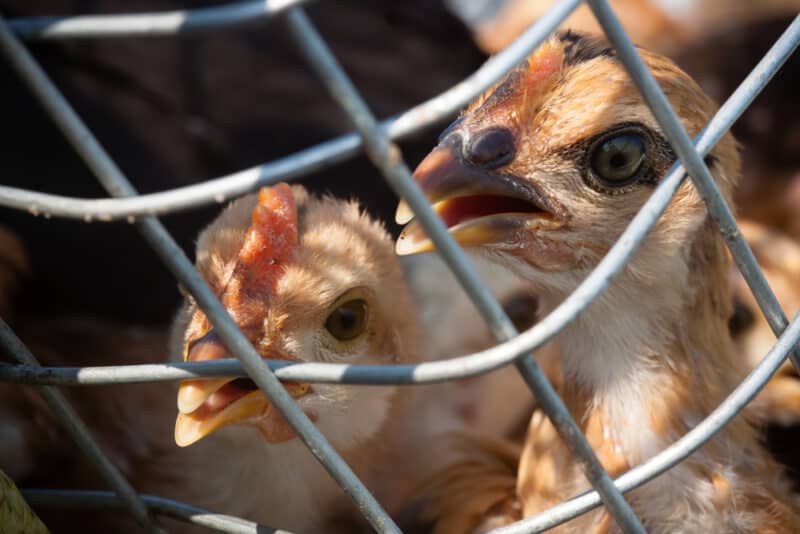
Protecting your poultry flock is important. Still, protecting yourself and the broader community of poultry keepers is also critical. So, you’ll also need to be able to spot the symptoms of avian flu and take action if necessary.
1. Know the Symptoms
Although there are lots of variants of avian flu, common poultry symptoms include depression, loss of appetite, cessation of egg-laying, nervousness, swelling, and blue discoloration of combs and wattles from poor circulation, coughing, sneezing, and diarrhea.
Additionally, sudden death can occur without any previous signs. If members of your flock exhibit these symptoms, treat them as if they have avian flu until you are certain they don’t.
2. Protect Yourself
If you suspect avian flu in your flock, avoid physical contact with your birds. Use precautions like mask-wearing, hand washing, and extra sanitation to protect yourself from possible infection.
Also, make sure to cook your eggs or poultry meat products thoroughly. Plus, wash your hands after handling uncooked eggshells or carcasses as a precaution.
3. Notify Officials
You’ll also have to immediately contact your state agricultural office. They can direct you on the next steps to take to determine if your flock is infected with avian flu and to ensure the safety of the broader poultry community.
As difficult as it is to think about culling your flock, you should also be ready to comply with that requirement, safely, if officials mandate it.
Conclusion
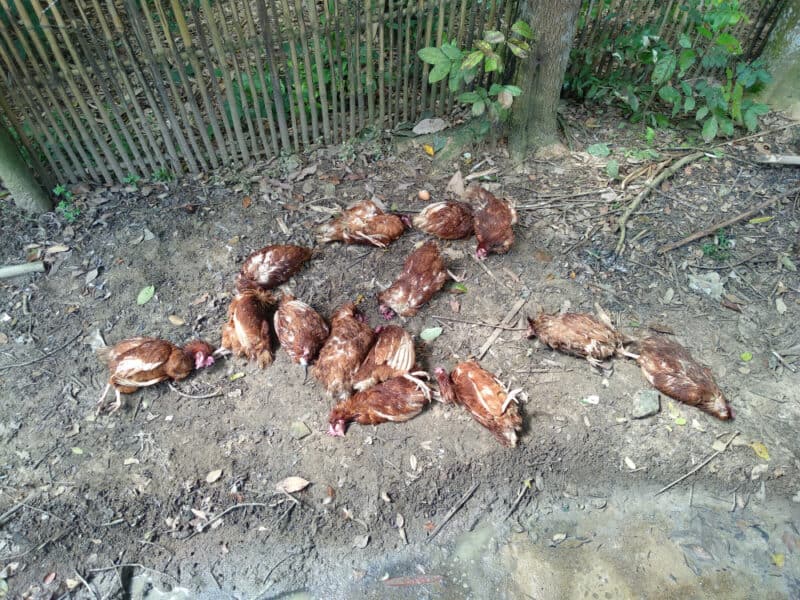
I hope that you will never need the information above. However, avian flu is a recurring and real threat to our domesticated poultry and wild bird communities. So, be informed, stay prepared, and act cautiously to prevent unnecessary losses.
